Having personally explored the world of vinegars in my culinary endeavors, the distinction between white vinegar vs white wine vinegar has intrigued me. Both these vinegars possess unique qualities that enhance various dishes, but understanding their differences is crucial for achieving the desired flavors.
In this article, we delve into the comparison of white vinegar and white wine vinegar, exploring their distinct characteristics, culinary applications, and the impact they have on the taste profiles of our favorite recipes. Join me on this flavorful journey as we unravel the contrasts between these two vinegars and discover their individual charms.
What is vinegar?
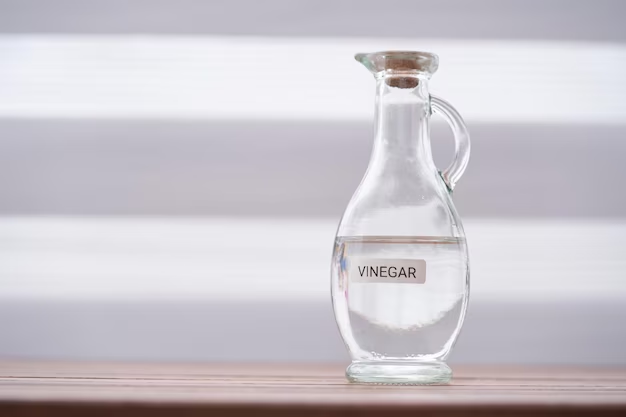
Vinegar is a versatile liquid that is commonly used in various culinary and cleaning applications. It is produced through a fermentation process that converts sugars into acetic acid. The word “vinegar” itself comes from the French word “vin aigre,” which translates to “sour wine.”
Importance of Vinegar in Culinary and Cleaning Applications
Vinegar plays a crucial role in both culinary and cleaning realms. In the culinary world, vinegar is prized for its ability to add acidity, enhance flavors, and tenderize meat. It is commonly used in dressings, marinades, sauces, and pickling.
In cleaning applications, vinegar is valued for its natural and non-toxic properties. Its acidity makes it effective in breaking down grease, removing stains, eliminating odors, and disinfecting surfaces. Many people prefer using vinegar as a safer alternative to harsh chemical cleaners.
What is white wine vinegar?
White wine vinegar is a type of vinegar that is produced by fermenting white wine. It is made by allowing the wine to undergo a second fermentation process, during which bacteria convert the alcohol in the wine into acetic acid. This process imparts the characteristic tangy flavor and acidity to the vinegar.
White wine vinegar is typically made from high-quality white wines, such as Chardonnay or Sauvignon Blanc. The choice of wine used in the production of white wine vinegar can influence its flavor profile. It often carries subtle fruity notes and a more delicate taste compared to other types of vinegar.
Due to its mild flavor, white wine vinegar is a popular choice for salad dressings, vinaigrette, and light sauces. It can enhance the taste of various dishes without overpowering them. Additionally, white wine vinegar is used in marinades to tenderize the meat and add a tangy kick.
It’s important to note that white wine vinegar is different from white vinegar, which is made from distilled grain alcohol. While both tablespoons of vinegar have their unique uses, white wine vinegar offers a more nuanced flavor profile that pairs well with many culinary creations.
What is white vinegar?
White vinegar, also known as distilled vinegar, is a type of vinegar that is made from distilled grain alcohol. It is a clear liquid with a high level of acidity, typically ranging from 5% to 8%.
The production process of white vinegar involves the fermentation of distilled alcohol. The alcohol is first diluted with water and then fermented by specific strains of bacteria called Acetobacter. These bacteria convert the alcohol into acetic acid through a process known as acetic fermentation.
White vinegar has a strong, sharp, and tangy flavor profile due to its high acidity. It does not have the fruity or delicate notes found in other types of vinegar like wine vinegar or apple cider vinegar.
White vinegar is widely used in cooking, baking, canning, and food preservation. It is a versatile ingredient that can be used for pickling vegetables, making marinades, dressings, and sauces. Its acidity also makes it useful for cleaning purposes. White vinegar is a popular natural cleaning agent due to its ability to cut through grease, remove stains, and eliminate odors.
Due to its intense acidity, white vinegar is typically not consumed on its own but rather used as an ingredient in various recipes or diluted for cleaning purposes. It is important to note that white vinegar should not be confused with white wine vinegar, which has a milder flavor and is made from the fermentation of white wine.
What is dry white wine?
Dry white wine refers to a type of white wine that has minimal residual sugar, resulting in a crisp and refreshing taste. Unlike sweet or off-dry white wines, dry white wine is fermented until most of the grape sugars are converted into alcohol, leaving little to no perceptible sweetness.
The term “dry” indicates that the wine lacks sweetness rather than being completely devoid of any residual sugar. Dry white wines typically have less than 10 grams of sugar per liter, with some wines having even lower levels. The absence of significant sweetness allows the natural flavors and acidity of the grapes to shine through, giving dry white wines a clean and vibrant character.
Dry white wines are known for their versatility and ability to pair well with various foods. They often exhibit flavors such as citrus, green apple, pear, melon, and sometimes mineral or herbal notes, depending on the grape variety used and the winemaking techniques employed. Common grape varieties used to produce dry white wine include Sauvignon Blanc, Chardonnay, Pinot Grigio, Riesling (when vinified in a dry style), and many others.
Dry white wine is a popular choice for pairing with seafood, salads, poultry, light pasta dishes, and appetizers. Its crispness and acidity can complement and enhance the flavors of these foods, providing a refreshing and well-balanced drinking experience.
It’s worth noting that the term “dry” can also apply to other types of wines, such as red and rosé, indicating a lack of perceptible sweetness in those wines as well.
How to use white vinegar vs white wine vinegar?
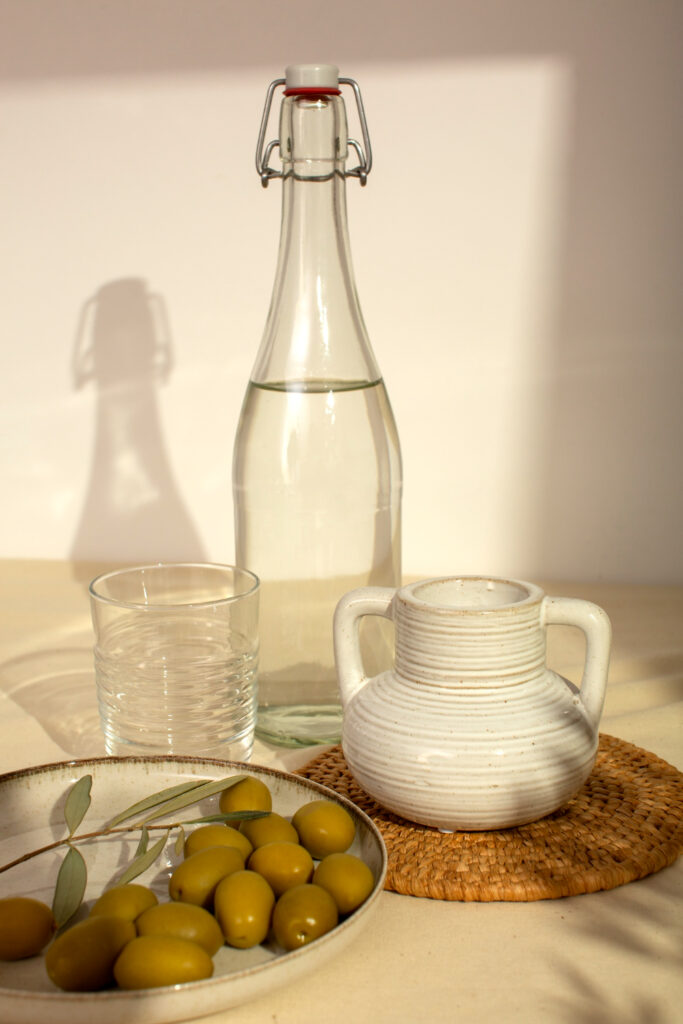
White vinegar and white wine vinegar can be used in various ways in cooking and other applications. Here’s how to use each vinegar:
White vinegar
- Cooking and Baking: Use white vinegar as a versatile ingredient in cooking and baking. It can be added to marinades, sauces, dressings, and pickling recipes to add acidity and tanginess.
- Cleaning: Dilute white vinegar with water to create a natural cleaning solution. It can be used to clean surfaces, remove stains, and eliminate odors. Simply spray or apply the vinegar solution, let it sit for a few minutes, and then wipe clean.
- Disinfecting: White vinegar’s antimicrobial properties make it effective as a disinfectant. Use it undiluted or in a diluted solution to sanitize cutting boards, kitchen utensils, and other surfaces.
- Laundry: Add white vinegar to the rinse cycle when washing clothes to help remove odors, soften fabrics, and reduce static cling.
- Weed Killer: Use undiluted white vinegar as a natural weed killer by spraying it directly onto unwanted plants or weeds in your garden or walkways.
White wine vinegar
- Salad Dressings and Vinaigrettes: White wine vinegar adds a mild acidity and subtle fruity flavor to salad dressings and vinaigrettes. Combine it with olive oil, herbs, and other ingredients to create delicious dressings.
- Marinades: Use white wine vinegar as a base for marinades, especially for lighter meats, fish, or vegetables. It can help tenderize and infuse flavors into the ingredients.
- Sauces and Reductions: White wine vinegar can be added to sauces and reductions to enhance flavors and provide acidity. It works well in pan sauces, beurre blanc, and reductions for meat or fish dishes.
- Pickling: White wine vinegar can be used for pickling various vegetables, providing both acidity and flavor to the pickling brine.
- Flavor Enhancer: Add a splash of white wine vinegar to certain dishes, such as soups, stews, and sauces, to brighten flavors and add a tangy kick.
- Remember, the specific use of white vinegar or white wine vinegar will depend on the recipe and the desired flavors. Consider the acidity, flavor profile, and intended outcome of the dish when deciding which vinegar to use.
Is white wine vinegar the same as white vinegar?
| White Vinegar | White Wine Vinegar | |
| Definition | Vinegar made from distilled grain alcohol | Vinegar made from fermented white wine |
| Composition | Acetic acid, water, and trace amounts of other compounds | Acetic acid, water, and flavors from the original white wine |
| Acidity | High acidity (5% to 8%) | High acidity (5% to 7%) |
| Flavor Profile | Strong, sharp, and tangy | Milder with subtle fruity notes |
| Culinary Uses | Versatile for cooking, baking, canning, and preservation | Ideal for dressings, vinaigrettes, light sauces, and marinades |
| Cleaning Uses | Effective for cleaning purposes, cutting through grease, removing stains, and eliminating odors | Less commonly used for cleaning purposes |
| Recommended Pairings | Robust flavors, pickling, heavy dressings | Lighter dishes, salads, delicate sauces |
| Production Method | Distillation of grain alcohol and fermentation | Fermentation of white wine |
| Availability | Widely available | Commonly found in grocery stores |
White vinegar and white wine vinegar are two distinct types of vinegar with notable differences in their production methods, flavor profiles, and culinary uses. While both are acidic and can be used in various recipes, they offer different nuances that cater to specific culinary needs. It’s important to choose the appropriate vinegar based on the desired flavor and the specific application in cooking or cleaning.
What are the differences between white vinegar and white wine vinegar?
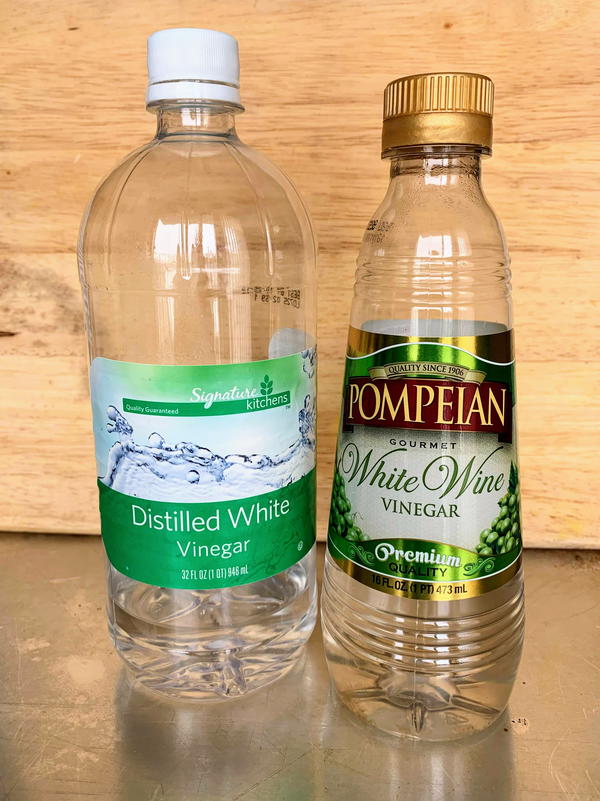
White vinegar and white wine vinegar differ in terms of their production process, acidity levels, flavor profiles, and culinary uses.
Production process
- White Vinegar Production: White vinegar is made through a two-step process involving distillation and fermentation. Distilled grain alcohol is diluted with water and then fermented by specific bacteria (Acetobacter) to convert the alcohol into acetic acid, resulting in white vinegar.
- White Wine Vinegar Production: White wine vinegar is produced by converting white wine into vinegar through a process known as acetous fermentation. The bacteria naturally present in the wine convert the ethanol in the wine into acetic acid, transforming it into white wine vinegar.
Flavor profiles
- White vinegar has a strong, sharp, and tangy flavor profile due to its high acidity and does not possess the subtle fruity notes found in white wine vinegar.
- White wine vinegar also has a milder flavor compared to white vinegar. White wine vinegar retains some of the flavors from the original white wine, offering subtle fruity notes and a more delicate taste.
What are the health benefits of white vinegar and white vinegar?
White vinegar and white wine vinegar both offer potential health benefits, although the research supporting these claims is limited. Here are some potential health benefits associated with each vinegar:
Potential health benefits of white vinegar
- Blood Sugar Control: Some studies suggest that consuming vinegar, including white vinegar, with meals may help improve insulin sensitivity and lower blood sugar levels after meals, which can be beneficial for individuals with diabetes or insulin resistance.
- Weight Management: Vinegar, including white vinegar, has been linked to increased feelings of fullness and reduced calorie intake, potentially aiding in weight management efforts.
- Digestive Health: The acetic acid in white vinegar may help support digestive health by promoting the growth of beneficial gut bacteria and inhibiting the growth of harmful bacteria.
- Cholesterol and Heart Health: Limited research suggests that consuming vinegar, including white vinegar, may help reduce total cholesterol, LDL cholesterol, and triglyceride levels, which are risk factors for heart disease.
- Antimicrobial Properties: The acetic acid in white vinegar exhibits antimicrobial properties that may help inhibit the growth of certain pathogens, making it useful for food preservation and potentially for topical applications.
Potential health benefits of white wine vinegar
- Antioxidant Content: White wine vinegar, derived from white wine, may retain some antioxidants from the original wine. Antioxidants help protect the body against oxidative stress and cellular damage.
- Heart Health: Like other types of vinegar, white wine vinegar may help reduce cholesterol levels and improve heart health. The acetic acid in vinegar has been associated with potential benefits for cardiovascular health.
- Digestive Support: White wine vinegar, similar to other vinegar, may support digestive health by aiding in the breakdown of food and enhancing nutrient absorption.
- Culinary Advantages: Using white wine vinegar in cooking can add flavor and acidity to dishes, promoting the consumption of a varied and balanced diet.
White cooking wine vs. white wine vinegar
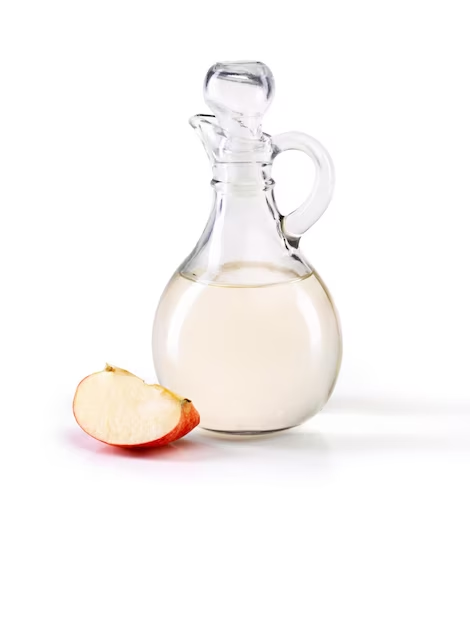
White cooking wine and white wine vinegar are two distinct ingredients used in cooking, each with its own characteristics and culinary applications. Here’s a comparison between the two:
Understanding white cooking wine
White cooking wine is a type of wine specifically made for cooking purposes. It is usually made from grapes like Chardonnay, Sauvignon Blanc, or Pinot Grigio. The alcohol content of white cooking wine is typically lower compared to regular drinking wine, usually around 10% to 13%.
Best uses for each in cooking
- White Cooking Wine: It is ideal for deglazing pans, enhancing sauces, adding depth to stews and soups, and providing a subtle wine flavor to dishes.
- White Wine Vinegar: It is best suited for vinaigrettes, pickling vegetables, marinating meat, adding tanginess to certain sauces, and providing a vinegar kick to recipes.
When substituting one for the other, it’s essential to consider the intended flavors and balance in the recipe. White cooking wine can be a substitute for white wine vinegar in some dishes, but it may add additional sweetness and alcohol content. White wine vinegar, on the other hand, can provide acidity but lacks the wine-like flavors of white cooking wine.
Dry white wine vs. white wine vinegar
| Dry White Wine | White Wine Vinegar | |
| Distinct Characteristics | Alcoholic beverage made from fermented grapes | Vinegar made from fermented white wine |
| Flavor Profile | Varied flavors depending on grape variety and winemaking techniques. Can range from crisp and citrusy to rich and buttery. | Tart, tangy, and acidic flavor profile |
| Acidity | Moderate to high acidity | High acidity |
| Alcohol Content | Contains alcohol | Non-alcoholic vinegar |
| Culinary Uses | Widely used in cooking to add depth, flavor, and complexity to dishes. Can be used for braising, deglazing, sauces, and marinades. | Primarily used for its acidity and tanginess. Commonly used in salad dressings, vinaigrettes, pickling, and marinades. |
| Flavor Enhancement | Enhances flavors in dishes, especially when used in reduction sauces, risottos, and creamy preparations. | Adds tanginess and acidity to recipes, enhancing and balancing flavors. |
| Pairing with Food | Can be paired with a variety of foods, including fish, poultry, seafood, creamy sauces, and vegetables. | Complements a wide range of ingredients, particularly in salads, dressings, light sauces, and pickled dishes. |
The table above outlines the distinct characteristics of dry white wine and white wine vinegar, comparing their flavor profiles, acidity levels, culinary uses, and flavor enhancement properties. While both dry white wine and white wine vinegar can enhance flavors in cooking, they differ in terms of their alcohol content, acidity, and specific applications in culinary creations.
How effective is white vinegar as a cleaner?
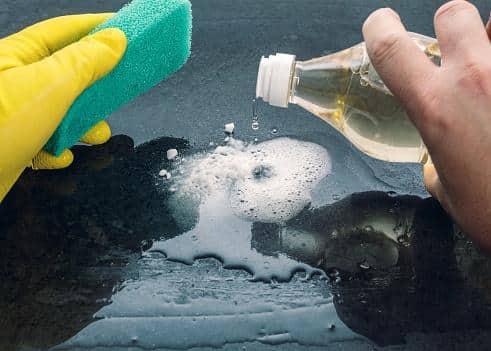
Using white vinegar as a cleaning agent
White vinegar is a popular and versatile natural cleaning agent that is known for its effectiveness in various cleaning applications. Here’s a closer look at the advantages, limitations, and popular uses of white vinegar for cleaning:
Advantages of white vinegar for cleaning
- Natural and Non-Toxic: White vinegar is a natural cleaning solution that does not contain harsh chemicals or toxins, making it a safer option for both the environment and human health.
- Antibacterial Properties: The acetic acid in white vinegar has antimicrobial properties, making it effective against certain types of bacteria and germs.
- Versatile: White vinegar can be used to clean a wide range of surfaces, including countertops, windows, mirrors, floors, appliances, and more.
- Odor Eliminator: White vinegar has the ability to neutralize and eliminate unpleasant odors, making it useful for tackling smells in various areas of the home.
- Cost-Effective: White vinegar is an affordable cleaning solution that is readily available in most households.
Limitations of white vinegar for cleaning
- Limited Stain Removal: While white vinegar is effective for general cleaning, it may have limitations when it comes to removing tough stains, such as those caused by red wine, ink, or grease.
- Not Suitable for All Surfaces: Due to its acidity, white vinegar may not be suitable for use on certain surfaces such as marble or natural stone. It’s important to test it on a small, inconspicuous area first or consult the manufacturer’s recommendations.
Popular cleaning applications and DIY recipes
- All-Purpose Cleaner: Mix equal parts of white vinegar and water in a spray bottle for a simple and effective all-purpose cleaner.
- Glass and Mirror Cleaner: Dilute white vinegar with water and use it to clean windows, mirrors, and other glass surfaces for a streak-free shine.
- Surface Disinfectant: Apply undiluted white vinegar to surfaces and let it sit for a few minutes before wiping clean to help disinfect and kill germs.
- Floor Cleaner: Add a small amount of white vinegar to warm water and use it to mop hard floors, excluding sensitive surfaces like wood.
- Lime Scale Remover: Soak fixtures affected by lime scale in white vinegar overnight, then scrub or wipe clean to remove the buildup.
- White vinegar is a versatile and effective cleaner for many household cleaning tasks. Its natural properties, affordability, and versatility make it a popular choice among those seeking eco-friendly cleaning alternatives. However, it’s important to be mindful of its limitations and suitability for specific surfaces.
Can I substitute white vinegar for white wine vinegar in a recipe?
Yes, you can often substitute white vinegar for white wine vinegar in a recipe, but it’s important to consider the flavor profile and acidity of each vinegar before making the substitution. Here are a few points to keep in mind:
- Acidity Level: White wine vinegar tends to have a milder acidity compared to white vinegar. If the recipe calls for a specific level of acidity, you may need to adjust the amount of white vinegar used or dilute it slightly with water to match the desired acidity level.
- Flavor Profile: White wine vinegar has a subtle fruity note due to its fermentation from white wine. White vinegar, on the other hand, has a more pronounced tangy and sharp flavor. Keep in mind that when substituting white vinegar, you may introduce a stronger vinegar flavor to the dish, which could alter the overall taste.
- Culinary Uses: Consider the purpose of white wine vinegar in the recipe. If it is primarily used to provide acidity or balanced flavors, white vinegar can usually be used as a suitable substitute. However, if the recipe calls for white wine vinegar to add specific flavor characteristics, such as in a salad dressing or marinade, the substitution may result in a different taste profile.
- Quantity Adjustment: When substituting white vinegar for white wine vinegar, you may need to adjust the quantity used based on the desired level of acidity and flavor intensity. Start with a slightly smaller amount of white vinegar and taste as you go, adding more if needed.
FAQs
Is white balsamic vinegar a suitable replacement for white wine vinegar in dressings?
White balsamic vinegar can be a suitable replacement for white wine vinegar in dressings, depending on the desired flavor profile and the specific recipe. Here are some factors to consider:
- Mildness: White balsamic vinegar has a milder flavor compared to white wine vinegar. It offers a subtly sweet and less tangy taste. If you prefer a dressing with a softer and sweeter flavor profile, white balsamic vinegar can be a suitable substitute.
- Color: White balsamic vinegar has a clear or pale golden color, while white wine vinegar is typically clear. If the appearance of the dressing is important to you, consider how the color of white balsamic vinegar may impact the overall presentation.
- Complementary Flavors: White balsamic vinegar pairs well with a variety of ingredients, particularly in dressings that incorporate fruits, delicate greens, or subtle herbs. It can contribute a touch of sweetness and mild acidity to the dressing.
- Adjustments: Keep in mind that white balsamic vinegar may introduce a sweeter flavor to the dressing. Adjusting the other ingredients, such as adding a bit more acidity from lemon juice or balancing sweetness with additional savory elements, may be necessary to maintain a desired flavor balance.
The decision to use white balsamic vinegar as a replacement for white wine vinegar in dressings will depend on personal preference and the specific recipe. It’s recommended to experiment and taste as you go to ensure the desired flavor profile is achieved.
Are white vinegar and white wine vinegar interchangeable?
White vinegar and white wine vinegar are not always interchangeable in recipes. While they can have similar acidity levels, their flavor profiles differ. White vinegar has a strong, sharp tanginess, while white wine vinegar has a milder and slightly fruity taste. It’s important to consider the desired flavor impact when deciding whether to substitute one for the other.
Can I use white wine vinegar instead of white vinegar for cleaning?
Yes, you can use white wine vinegar instead of white vinegar for cleaning. Both vinegars have cleaning properties due to their acidity. White wine vinegar may be a bit more expensive, but it can effectively clean surfaces, remove stains, and neutralize odors. Keep in mind that the slight difference in flavor may be present, but it won’t affect the cleaning performance.
Can I substitute white vinegar for white wine vinegar in salad dressings?
Yes, you can substitute white vinegar for white wine vinegar in salad dressings. However, it’s important to note that white vinegar has a stronger and sharper flavor compared to white wine vinegar, which has a milder and slightly fruity taste.
When using white vinegar as a substitute, you may need to adjust the quantity used to avoid overpowering the dressing with its strong tanginess. It’s recommended to start with a smaller amount and gradually add more to achieve the desired taste.
Can I use white wine vinegar instead of white vinegar for making mayonnaise?
Yes, you can use white wine vinegar instead of white vinegar for making mayonnaise. White wine vinegar adds a subtle fruity note to the mayonnaise, which can enhance its flavor. However, it’s important to note that white wine vinegar has a milder acidity compared to white vinegar.
When substituting, you may need to adjust the quantity of white wine vinegar used to ensure the desired level of acidity in the mayonnaise. It’s recommended to taste and adjust as needed to achieve the desired flavor profile.
Does white wine vinegar have a longer shelf life than white vinegar?
Both white wine vinegar and white vinegar have long shelf lives. When stored properly in a cool and dark place, unopened bottles of white vinegar can last indefinitely. Similarly, unopened bottles of white wine vinegar can also last for a long time, typically around 2 to 3 years.
Once opened, both vinegars should be stored tightly sealed in the refrigerator to maintain their quality and freshness. It’s important to check for any signs of spoilage, such as changes in color, odor, or mold, before using them.
Which vinegar is more commonly found in grocery stores: white vinegar or white wine vinegar?
White vinegar is generally more commonly found in grocery stores compared to white wine vinegar. White vinegar is widely used for cooking, canning, cleaning, and various household purposes, making it a staple product in most supermarkets.
On the other hand, white wine vinegar, while still widely available, may be found in a smaller section of the vinegar aisle or in specialty food stores. The availability of white wine vinegar may vary depending on the location and the specific grocery store.
Can I substitute white wine vinegar for white vinegar when making homemade cleaning solutions?
Yes, you can substitute white wine vinegar for white vinegar when making homemade cleaning solutions. Both vinegars have similar cleaning properties due to their acidity.
White wine vinegar may have a slightly milder and fruitier flavor compared to white vinegar, but this difference in flavor is not significant when it comes to cleaning. White wine vinegar can effectively be used as a natural and eco-friendly cleaning agent in various DIY cleaning solutions, just like white vinegar.
Can I use white wine vinegar instead of white vinegar?
Yes, you can use white wine vinegar as a substitute for white vinegar in many recipes. However, it’s important to consider the flavor profile and acidity of each vinegar before making the substitution.
Conclusion
Finally, white vinegar vs white wine vinegar are two distinct types of vinegar with their own unique characteristics and uses. While both vinegars offer acidity and can be used in various culinary and cleaning applications, there are notable differences to consider.
More cooking comparisons
- Pad See Ew Vs Drunken Noodles – It’s really confused!
- Vietnamese Spring Roll vs Egg Roll – How Exactly Are They Different?
- Chow Fun Vs Mei Fun Noodles – Unraveling the Differences